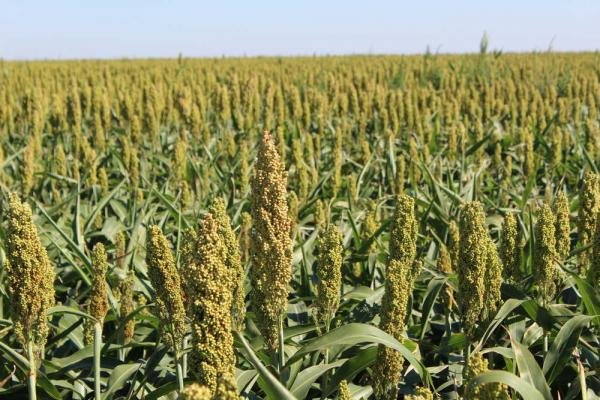
Glenn Schur’s sorghum is gluten-free, but then again, so is all sorghum.
The trick for the Plainview-area farmer to be able to use his crop in food products labeled gluten-free is to give it some distance.
“We can’t have it exposed to wheat, barely or oats,” he said. “It can’t be in the same elevator.”
That rule could create more of a hassle if neighboring farmers always seemed to be dropping off wheat loads at the same time he brings his sorghum. In the South Plains, though, wheat tends to grow earlier in the year than sorghum. The two crops’ harvest seasons are months apart.
Between those seasons, he makes sure all his harvesting equipment is fully cleaned, with no remnants from his last wheat crop. When it comes to crop rotation, he avoids planting sorghum in a field that just hosted wheat.
“I wouldn’t grow sorghum right after wheat on the same field,” he said. “We need best management practices — that’s the key to the whole deal.”
People food, too
But food-grade sorghum such as what Schur produces represents a fairly small chunk of the country’s total crop. The majority still goes to livestock feed or the ethanol market.
Jennifer Blackburn, external affairs director for the Sorghum Checkoff, estimates less than 5 percent of U.S. sorghum is used for direct human consumption. That may not sound like a high number, but it’s above where it was before. Consumer demand for gluten-free products has contributed.
“It’s definitely grown significantly in the last two years,” she said. “We want it to be available to those who need a gluten-free diet — that’s certainly added to its popularity.”
National Sorghum Producers lists more than 350 food products made from sorghum; Blackburn is full of recipe ideas.
There’s sorghum flour, cereal, granola bars, popped sorghum — similar to popcorn — even sorghum beer and whiskey.
As a cooking grain, Blackburn compares it to rice and quinoa.
“Sorghum is really easy to use,” she said. “A lot of people like its versatility and the different things they can use it for.”
When to go gluten-free
Registered Dietician Kelli Paschall praises sorghum flour for its high levels of protein, iron and dietary fiber.
“It can be used really well,” she said.
As for its lack of gluten, that’s great too — but only for those who are truly gluten-intolerant. Unlike, say, sugar, gluten is not necessarily bad for you.
“Technically, there’s no reason to go on a gluten-free diet unless you have an intolerance for it,” she said.
Paschall, who works for Covenant Medical Group, described gluten intolerance as an umbrella term. Celiac disease, wheat allergies and certain other medical troubles can contribute.
The dietician suspects some patients incorrectly self-diagnose as gluten-intolerant. Certain symptoms such as gas and bloating could mean gluten intolerance, but they could also mean a host of other conditions.
“We see a rise in people telling us they are gluten intolerant, but not a rise in the formal diagnosis,” she said.
josephine.musico@lubbockonline.com • 766-8796
Follow Josie on Twitter @josiemusico
Source: http://lubbockonline.com/local-news/2016-08-22/sorghum-food-products-popular-gluten-free-diets

